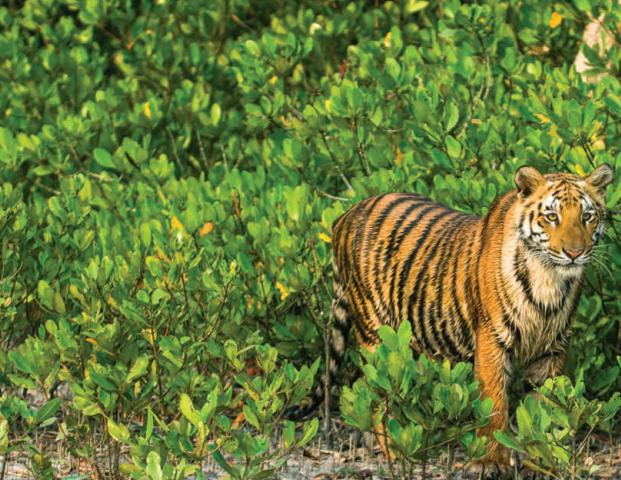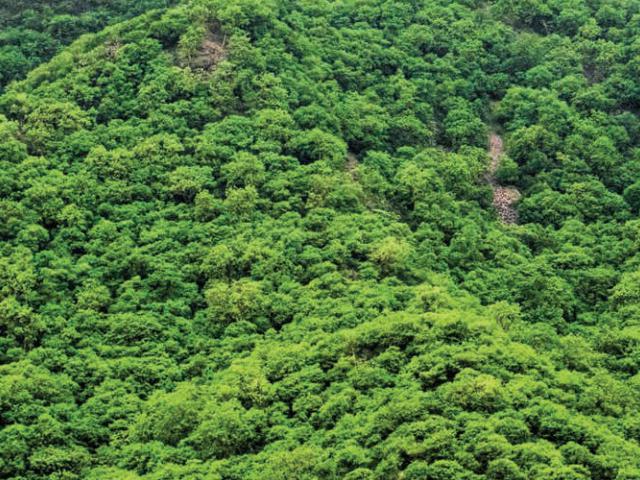In the times of Global Warming, there is bad news from the forests of India. The latest government report on the status of the forests of the country revealed that there has been an overall decline in the forest cover across the country's 32 tiger reserves ( of the 52).The forest cover in its sole Lion Conservation Area (LCA) of Gir in Gujarat has also shrunk. According to the biennial India’s State of Forest Report 2021, published by the Forest Survey of India, the country has also recorded an increase of 1,540 square kilometers in its forest cover but it was mainly due to plantation and agroforestry . There is an overall decline of 22.62 square kms in forest area and it should be a cause of concern.
Decade of Decline
Also read: Problem Of Plenty: Gir Lions Turn Scavengers As Deadly Virus Stares
In Kawal tiger reserve ,one of the richest teak and bamboo forests in the country, the entire area of this jungle is prime habitat for tigers that roam the contiguous terrain connecting the forests of Chandrapur with Gadchiroli in neighboring Maharashtra. But it has been under tremendous pressure due to human encroachments, illegal wood felling, and rapid deforestation. In fact ,the Andhra Pradesh State of Forests 2011 survey had revealed that since 1988, the Kawal forest area has lost 63 sq km of prime forest. Sanctity needs to be restored in this forest patch of south India.
Increase in Forest Cover : An Eye Wash ?
Though India has also recorded an increase of 1,540 square kilometers in its forest cover ,this is the increase which was recorded only during 2019 and 2021. In fact, India is lagging behind in meeting the target of bringing 33 % of its geographical area under forest cover. Even the increase in forest cover reported in the biennial survey seems to be an eye wash. A little analysis of data would reveal that Indiais is not adding dense forests.Rather, it is losing significant areas of natural forests with moderate tree cover. India has more forest cover with tree canopy density in the range of 10 to 40 per cent, referred to as ‘open forest’. The Forest Survey of India has listed four categories of jungles . They are: Very Dense Forest (with tree canopy density of 70 per cent or above) .Moderately Dense Forest ( canopy density of 40 per cent or above but less than 70 per cent) Open Forest (tree canopy density of 10 per cent or above but less than 40 per cent) and Scrub (tree canopy density less than 10 per cent) .
Also read: Shouldn’t The Record Number Of Tiger Deaths Be A Cause Of Concern?
Some 20 of the 52 tiger reserves have shown an increasing trend. These range from1.28 sq km in Pakke (Arunachal Pradesh) to 238.80 sq km in Buxa (West Bengal). Buxa,in fact, has recorded the highest decadal growth in forest cover in the country. It is followed by Anamalai in Tamil Nadu (120.78 sq km) and Indravatiin Chhattisgarh (64.48 sq km). An increase in the forest density and the big cat prey base, especially deer, had attracted a tiger, a first such sighting in 23 years, to the Buxa reserve in Jalpaiguri district in north Bengal.Forest officials in West Bengal now believe that that a better jungle would attract more tigers, which had migrated to neighboring Bhutan. The state shares a contiguous range of the protected area with Bhutan. It was in 1998 that images of a Royal Bengal tiger were last captured at the reserve.
Cover picture courtsey : India’s State of Forest Report 2021




Comments
Post a Comment